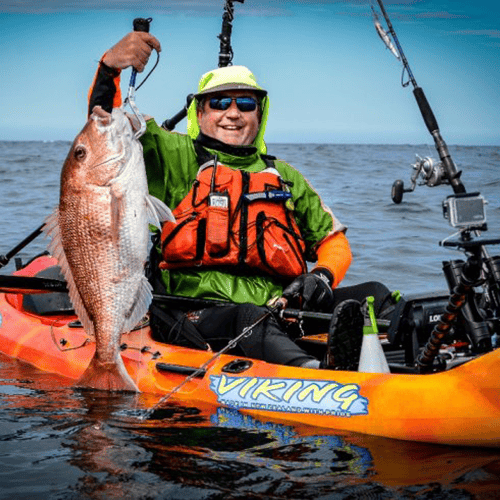
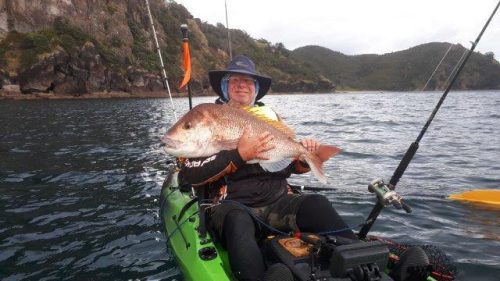
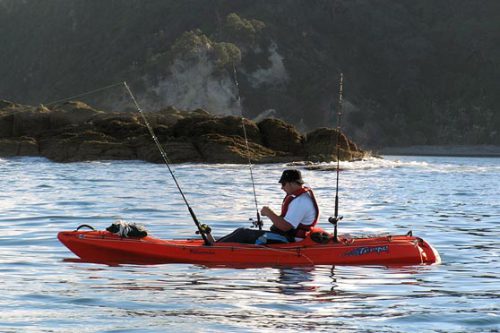
Kayak fishing for Big Snapper has really caught on in the last few years with more and more getting into this great form of fishing that can be enjoyed by most with a little bit of fitness and skills required.
You don’t have to break the bank to set yourself up and they require low maintenance to keep them in working order, plus with the price of fuel you can get to the spots that are even too tight for little boats to get to without spending hundreds.
Kayak fishing is a very effective way to target our popular species and the Big Snapper, you can get in closer to fowl ground and areas where other larger crafts can’t.
The engine room in a kayak may not have horsepower but it does produce very little noise disturbance to alert the fishery below you have arrived or above them when fishing.
Accessing rocky outcrops by kayak for a spot of land-based fishing is another advantage. With the correct guidance and equipment kayak fishing is an enjoyable and fast growing recreation sport.
One of the biggest things you must do is make sure you have the correct safety equipment with you and make sure the weather conditions are right for what you are wanting to do, as a lot like kayaking by themselves.
Kayaking for Big Snapper
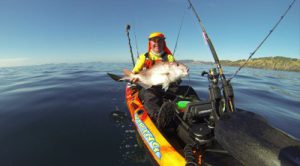 When you are looking for Big Snapper from your Kayak try to look for schools of fish that are tightly packed on or just above the bottom because the Big Snapper won’t be far away.
When you are looking for Big Snapper from your Kayak try to look for schools of fish that are tightly packed on or just above the bottom because the Big Snapper won’t be far away.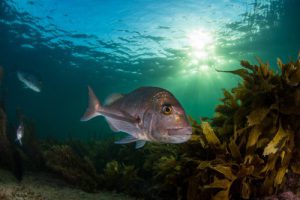 Big snapper often like to mooch and cruise the ledges picking up scraps from your berley.
Big snapper often like to mooch and cruise the ledges picking up scraps from your berley.